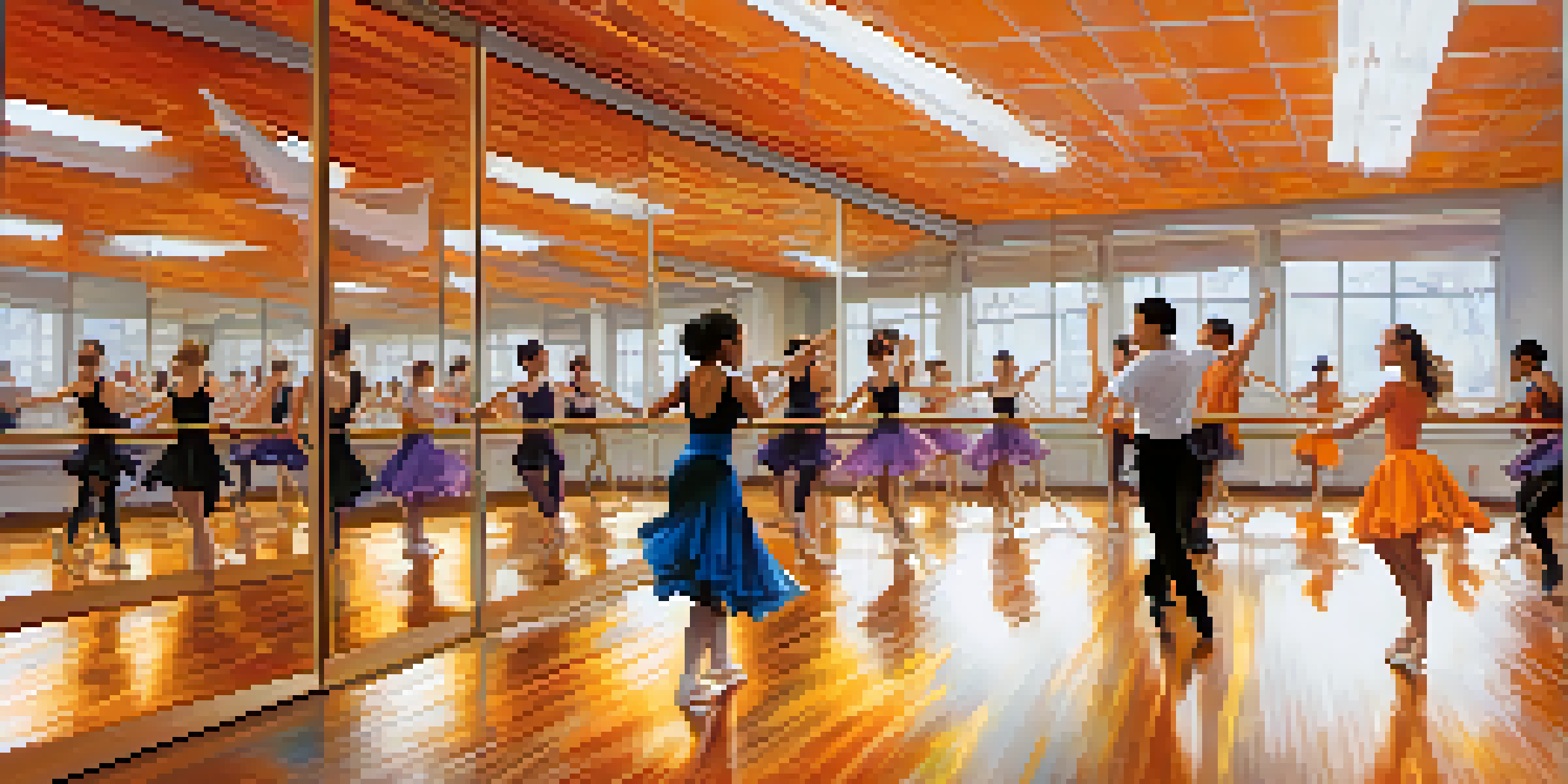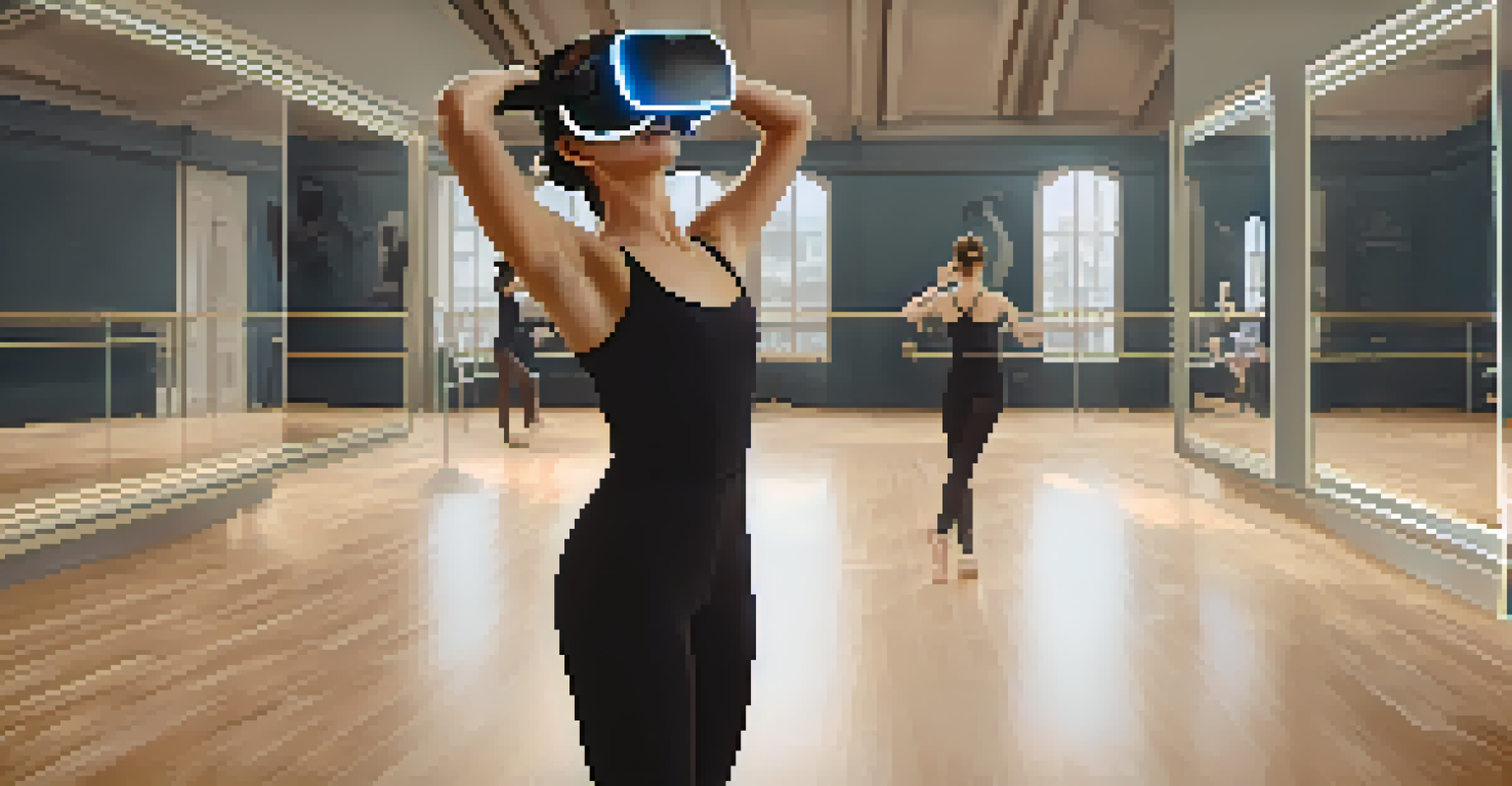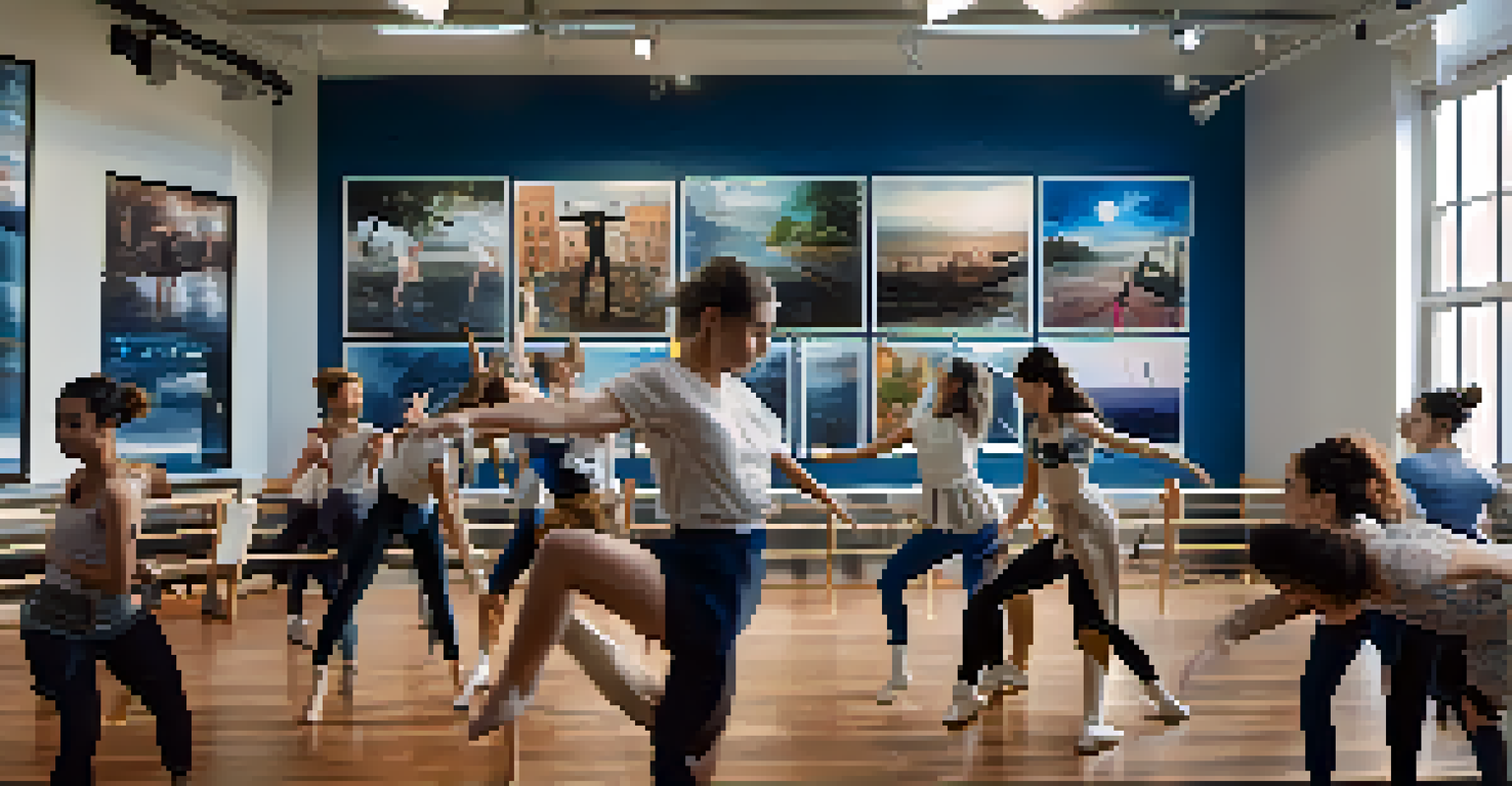Using Technology to Enhance Dance Education in Schools

The Role of Technology in Modern Dance Education
In today’s digital age, technology plays a crucial role in education, including dance. It allows for new teaching methodologies and enhances the learning experience for students. For instance, using video analysis helps dancers see their movements and improve their technique, much like athletes do in sports.
Dance is the hidden language of the soul.
Moreover, technology can bridge the gap between traditional dance forms and contemporary practices. By incorporating multimedia resources, instructors can introduce students to various dance styles from around the world. This not only enriches their understanding but also ignites their creativity.
Finally, technology fosters collaboration among students. Online platforms enable them to share choreography, receive feedback, and learn from each other, regardless of their physical location. This interconnectedness can lead to a more vibrant and diverse dance community within schools.
Virtual Reality: A New Dimension for Dance Learning
Virtual Reality (VR) is revolutionizing how dance is taught and experienced. With VR, students can immerse themselves in different environments, from prestigious dance studios to iconic stages. This not only adds excitement but also helps them visualize their performances in a real-world context.

Imagine a student practicing ballet in a virtual version of the Paris Opera House. The experience can be incredibly motivating and inspiring, pushing them to refine their skills. Plus, it offers a safe space for experimentation without the pressure of a live audience.
Tech Enhances Dance Learning
Technology transforms dance education by introducing innovative teaching methods and resources that improve technique and creativity.
Additionally, VR can cater to various skill levels, making dance education more accessible. Beginners can practice basic movements while advanced students can explore complex choreography, all in an engaging, interactive setting.
Utilizing Online Resources and Tutorials
The internet is a treasure trove of resources for dance education. Online tutorials and classes provide students with the chance to learn from expert instructors anytime, anywhere. This flexibility allows them to practice at their own pace, which can be particularly beneficial for those with busy schedules.
Technology is best when it brings people together.
Platforms like YouTube and dedicated dance websites offer a range of styles, from hip-hop to contemporary dance. Students can explore different genres and techniques, expanding their repertoire and finding what resonates with them. This self-directed learning fosters a sense of ownership over their dance journey.
Moreover, these resources can supplement classroom instruction, giving students additional perspectives and insights. Engaging with diverse content can spark their creativity and encourage them to experiment with their own choreography.
Wearable Technology: Tracking Progress in Dance
Wearable technology, such as fitness trackers and smart clothing, is becoming increasingly popular in the dance world. These devices can monitor a dancer's movements, providing valuable data on their performance. For instance, tracking metrics like steps, heart rate, and calories burned can help students understand their physicality better.
By analyzing this data, instructors can tailor their lessons to meet individual needs. If a student struggles with stamina, for example, the teacher can design specific exercises to build endurance. This personalized approach not only enhances learning but also boosts students' confidence.
VR Brings Dance to Life
Virtual Reality provides immersive environments for dancers, allowing them to visualize performances and explore choreography in engaging ways.
Additionally, wearables can gamify the learning process. Students might be motivated to improve their scores or reach fitness goals, making practice more enjoyable and engaging.
Interactive Dance Software and Apps
Interactive dance software and apps are powerful tools that can enhance choreography and creativity. Programs like DanceForms and Choreography Pro allow students to create, edit, and visualize their dance compositions digitally. This not only simplifies the process but also encourages experimentation with different styles and movements.
These applications also enable collaboration, as students can share their creations with peers for feedback. This fosters a sense of community and supports the development of critical thinking skills as dancers analyze and refine their work together.
Moreover, using technology to create choreography can make the learning process more engaging. Students may feel more empowered to express themselves artistically when they can visualize their ideas in real-time.
Enhancing Performance with Audio-Visual Technology
Audio-visual technology can elevate dance performances in schools, making them more engaging for both performers and audiences. Whether it’s through lighting effects, projection screens, or sound systems, this technology can create a dynamic atmosphere that enhances the storytelling aspect of dance.
For example, synchronized lighting can highlight key moments in a performance, while video backdrops can transport viewers to different settings. This multi-sensory experience captivates the audience and makes the performance memorable.
Digital Communities Foster Growth
Social media platforms create vibrant dance communities where students can showcase talent, connect with peers, and find inspiration.
Additionally, incorporating technology into performances helps students develop important skills. They learn to adapt to changing environments and think on their feet, preparing them for future opportunities in the performing arts.
Building a Digital Dance Community
Technology also allows for the creation of vibrant digital dance communities. Social media platforms like Instagram and TikTok provide dancers with opportunities to showcase their talent and connect with others. This exposure can lead to collaborations and inspire students to pursue their passion for dance.
Furthermore, these platforms can serve as sources of inspiration and education. Dancers can follow industry professionals, learn new techniques, and stay updated on dance trends. This continuous flow of information enriches their learning experience and motivates them to push their boundaries.

Ultimately, being part of a digital dance community fosters a sense of belonging. Students can share their journeys, celebrate achievements, and support one another, creating a positive environment for growth and creativity.